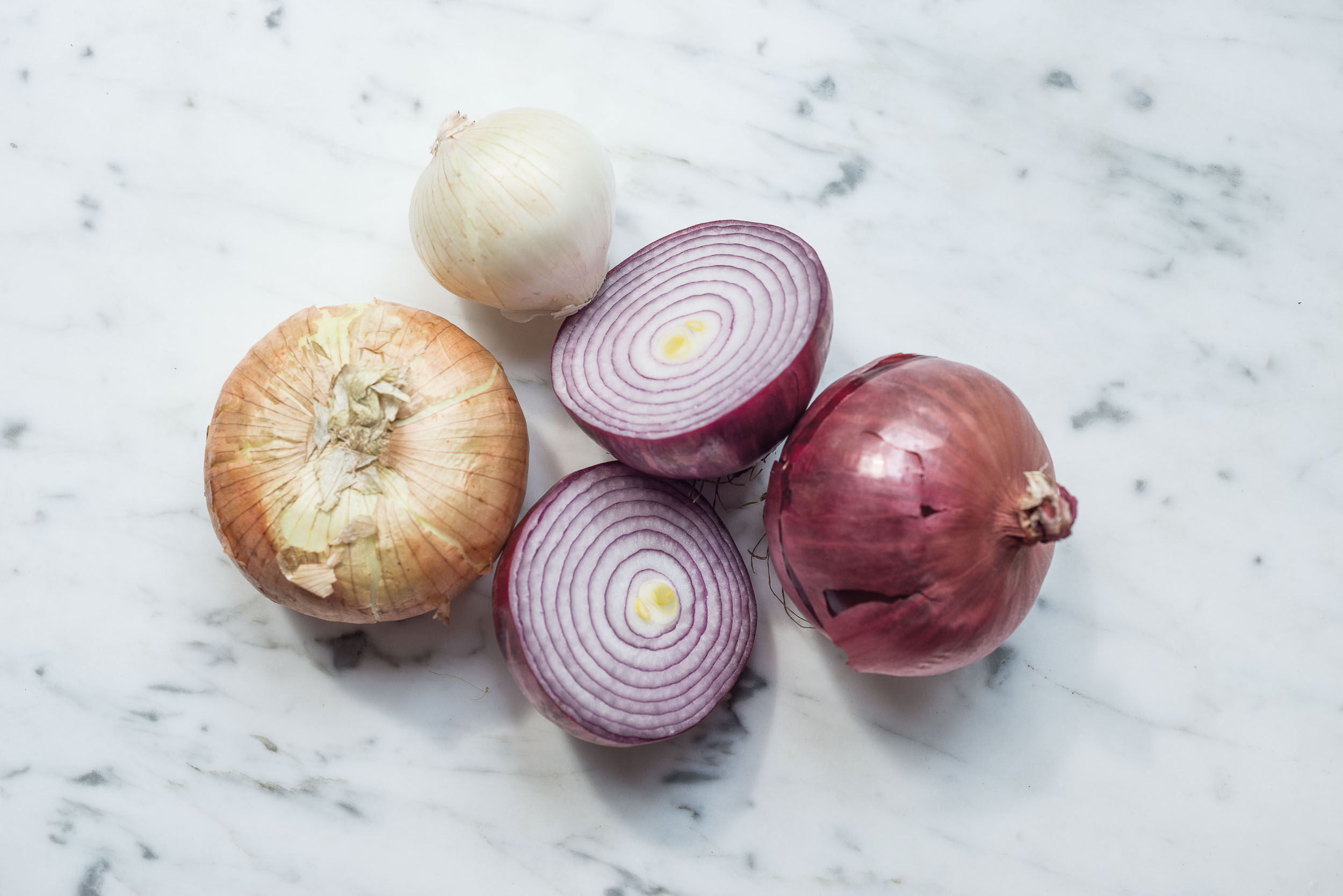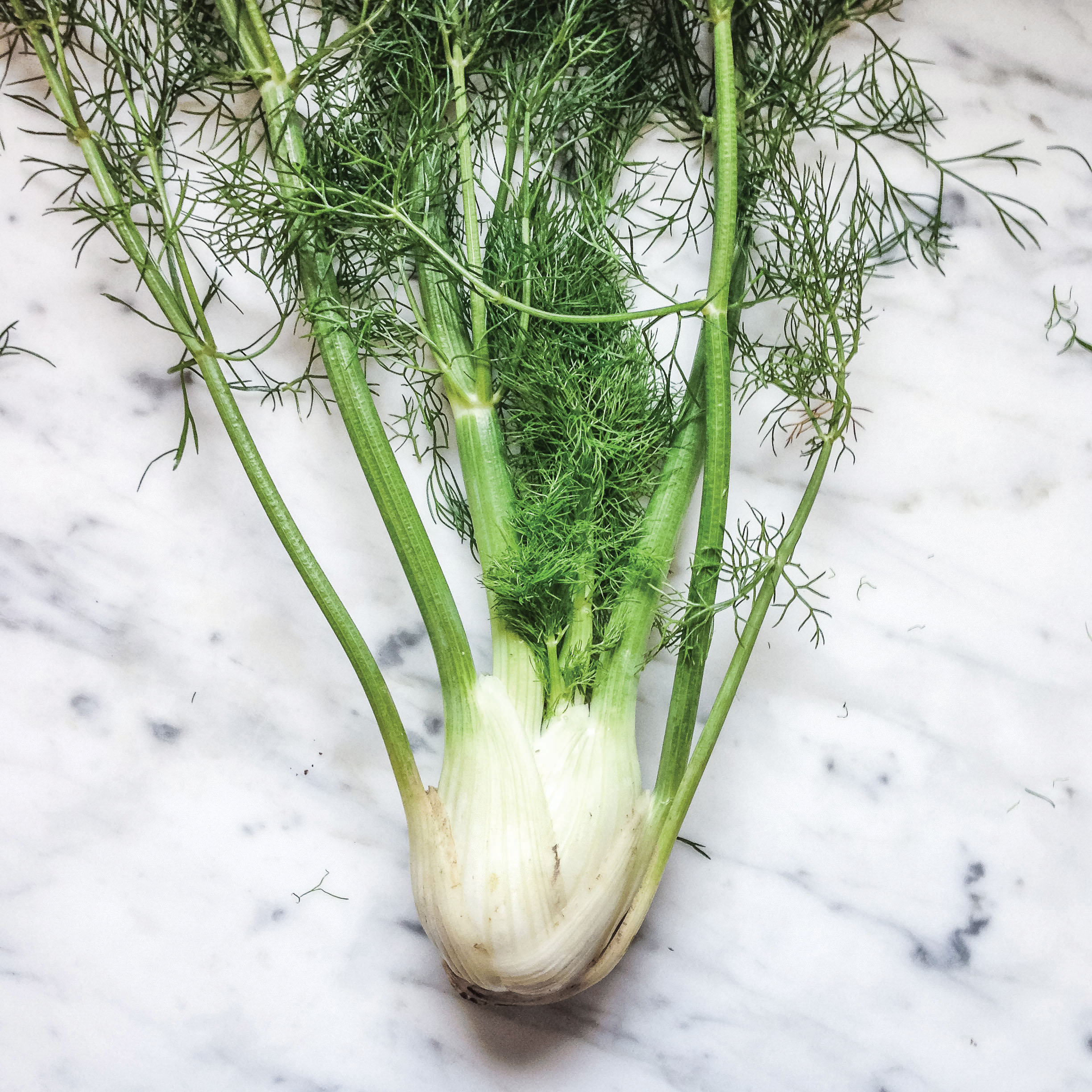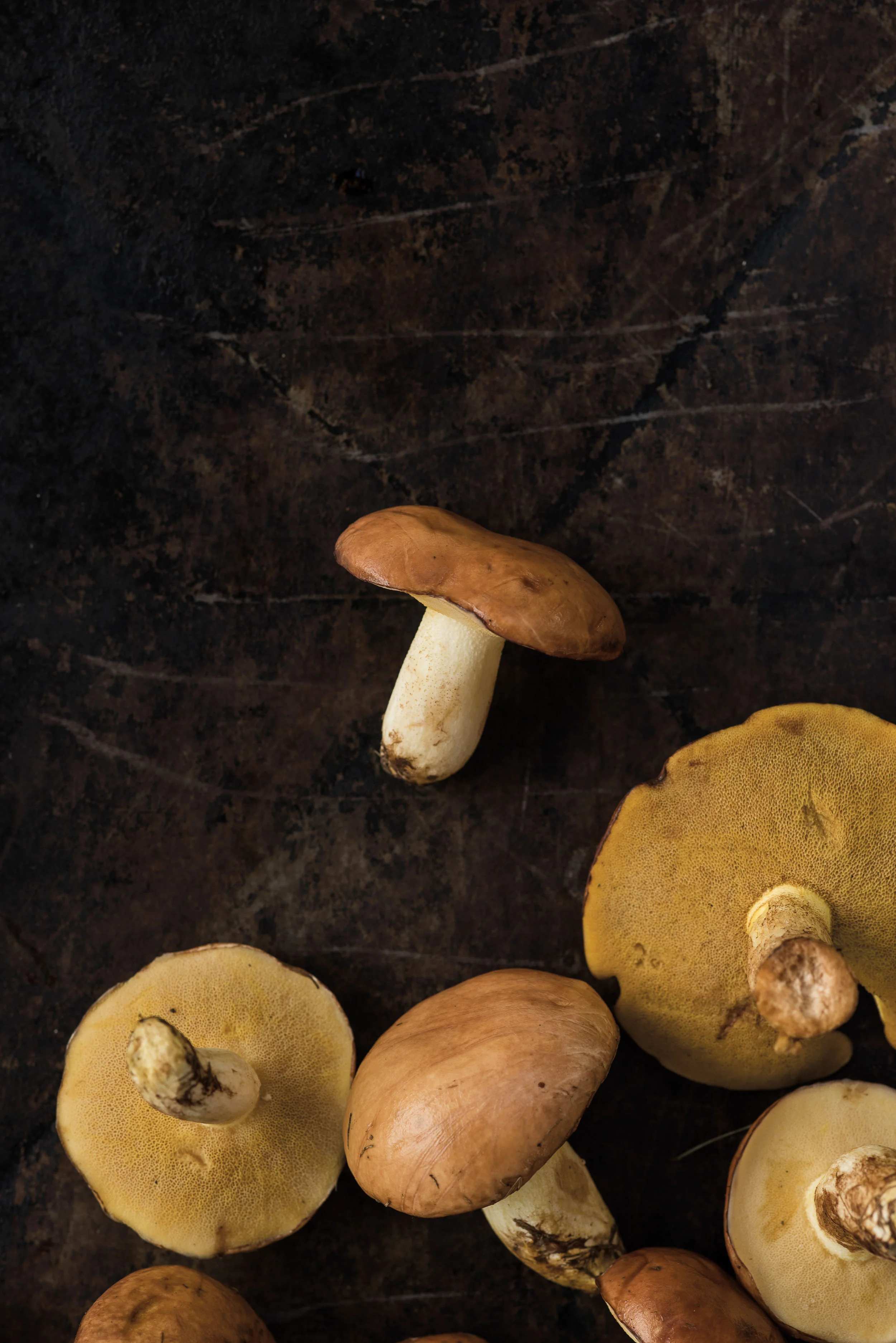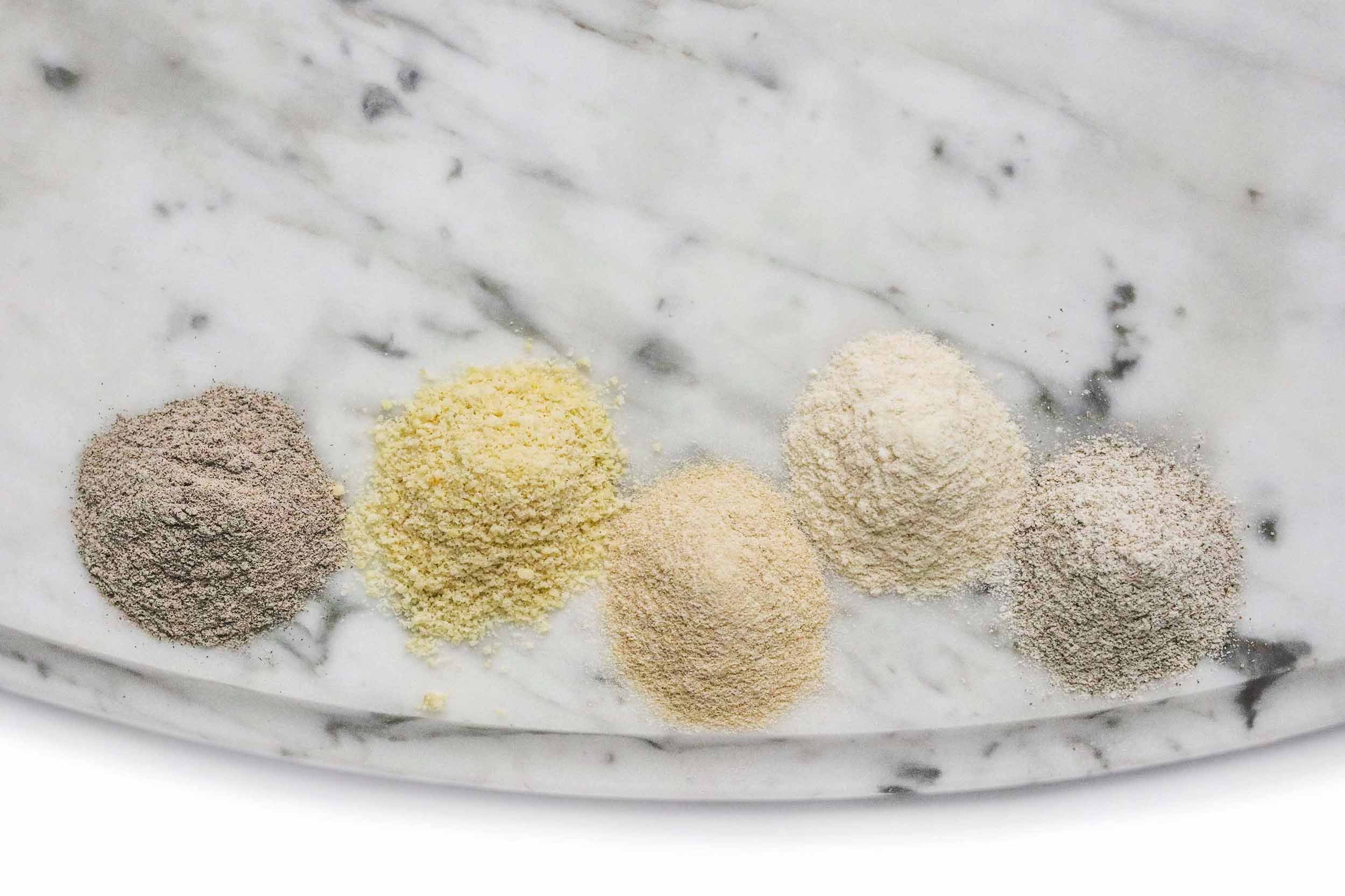One Ingredient: Onions

One of the foundational elements of global cooking ,onions are so ubiquitous we take them for granted.
In the Asian stir-fry. Italian pasta sauce. Raw on tacos. Jambalaya. Paella. It’s hard to imagine a foundational dish in any cuisine around the world that doesn’t use onions.
Archaeologists and botanists suppose that the onion and its cousins in the Allium family (garlic, scallion, shallot, leek, chive) have been cultivated for 5,000 years, but wild onions were likely part of humankind’s cuisine long before that. Onions are mentioned in the Bible, and the Egyptians saw eternal life in the onion’s circle-within-a-circle structure. Excavated Egyptian tombs are full of artistic references (in paintings showing lavish funeral feasts) and physical artifacts (onions placed over the eyes of mummies).
Today, they’re so abundant in grocery store bins and on local farmers’ market tables that we don’t give them much thought. You probably have at least one in your pantry right now.
Because the Allium family has so many members and uses, we’ll focus here on the onion: red, white, yellow, green.
Let’s start with green onions, or scallions. They’re either regular onions that are harvested while young and slender, before the large bulb forms, or they’re varieties bred to never get big. In spring at Ohio Valley farmers’ markets, it’s common to see young “spring onions” with bulbs the size of a quarter or thereabouts. Scallions have a less pungent onion flavor and can be used raw (as a topping for tacos, potato salad, or chili) or cooked (in stir-fries).
While green onions are sold fresh, not long after harvest, storage onions are meant for longer keeping, and that’s what we typically find in the big bin in the produce aisle. (Locally grown onions of all types are usually pretty fresh.) The older the onion is, the stronger its flavor.
Red onions have a pretty purple color that adds a visual pop to dishes when raw, and a sharp, spicy flavor. Sweet yellow onions have a milder flavor; they’re great when cooked in butter or olive oil until they’re deeply caramelized. White onions are full-flavored and pungent; if you want a real “onion-y” taste, this is your go-to.
Varietal onions like Vidalia and Walla Walla are grown in designated regions (Georgia and Washington, respectively) and have a mild, sweet flavor that reflects the soil they’re grown in.
Choosing & Cleaning
For scallions, look for fresh green tops with no wilting or browning and unblemished whites. Keep them in a plastic produce bag in the low-humidity drawer in the fridge.
When sorting through the bin of storage onions at the grocery, seek those that have a uniform, dry outer layer with no soft spots or black mold. Keep storage onions in an open bin in a dark pantry. Store potatoes and onions in separate bins; they both release ethylene gas, which speeds up ripening and can cause rot. Keep unused portions of cut onion in a plastic bag in the fridge.
Using
Red onions, because of their color, and white onions, because of their crisp flavor, are the types most commonly used raw. To tame their strong bite, soak sliced or diced onion in cold water for about 10 minutes, then drain and pat dry before using.
When a recipe calls for diced or sliced onion as the basis for a cooked dish—sauce, soup, or stew—white or regular yellow onions are best. Many global cuisines include onion in a trio of aromatic ingredients that are chopped into uniform pieces and cooked in fat at the beginning of a dish: the French call it mirepoix (onion, carrot, celery); the Italians sofritto (sometimes with pancetta and garlic); Cajun cooks know it as the holy trinity (onion, bell pepper, celery).
Trim off the stem and root ends of the onion, then peel away the dried outer layer and the next layer if it’s soft, tough, or bruised, then slice, wedge, or dice. For scallions, trim off the root end and any desiccated tops, and slice the white and green parts. (Fun fact: You can regrow green onions by cutting about 1 inch above the root, placing the roots in a glass with a bit of water, and planting after they begin to sprout.)
Finally: Yes, chopping onions really does make you cry, and short of wearing goggles there’s not much to be done about it. If you’re particularly tearful, use a very sharp knife and make quick work of the job; the chemical compound that onions release when their cell walls are punctured that triggers our eyes to water dissipates pretty quickly. Work near an open window or fan if it’s a problem. Naturally, someone’s genetically engineered a no-tear onion variety: They’re called Sunions, and they’re grown in Washington and Nevada, surely on their way to a store in our region soon.
Here's some of our recipes with onions
Bryn’s long career in publishing took a left turn sometime around 2010, when she discovered the joy of food writing. Since then, she’s found professional nirvana as the editor of Edible Ohio Valley, author of The Findlay Market Cookbook, and occasional instructor at The Cooking School at Jungle Jim’s. Find her seasonal recipes at writes4food.com.





